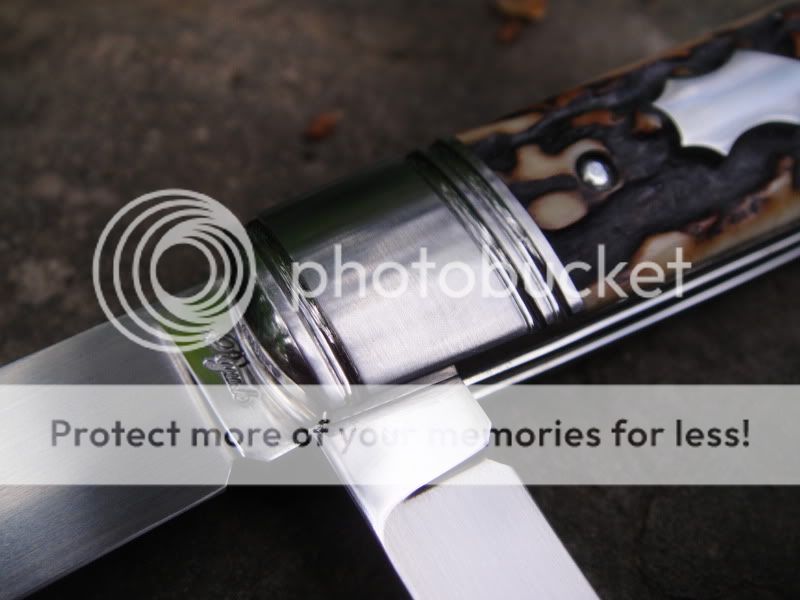- Joined
- Sep 12, 2002
- Messages
- 365
As I was examining my newest Ryu K knife and comparing it to a similar Bose model, I noticed the kick was different. Not sure I've seen this before (except other Ryu knives).
Does anyone know what this style kick is called?
Here's the 'traditional' kick found on the vast majority of slipjoints I've seen:

Here's the 'stovepipe' kick Tom Overynder uses:

And, here is the Ryu K kick:

It's hard to see in photos, but the tab which serves as the blade stop in the closed position is inside the knife. The part of the tang closest to the pivot is thicker and is what contacts the back spring. The front part of the tang, which is exposed when the knife is open, does not hit the spring.
This image may show it best:

Three different solutions to the same problem, all of which work well. To me, it seems the style Ryu uses may be harder to execute, but I really have no clue!
Any idea what this kick is called? Internal kick? Hidden kick? Kick me upside the head because it really doesn't matter?
Any help would be appreciated. Thanks!!
Does anyone know what this style kick is called?
Here's the 'traditional' kick found on the vast majority of slipjoints I've seen:

Here's the 'stovepipe' kick Tom Overynder uses:

And, here is the Ryu K kick:

It's hard to see in photos, but the tab which serves as the blade stop in the closed position is inside the knife. The part of the tang closest to the pivot is thicker and is what contacts the back spring. The front part of the tang, which is exposed when the knife is open, does not hit the spring.
This image may show it best:

Three different solutions to the same problem, all of which work well. To me, it seems the style Ryu uses may be harder to execute, but I really have no clue!
Any idea what this kick is called? Internal kick? Hidden kick? Kick me upside the head because it really doesn't matter?
Any help would be appreciated. Thanks!!

